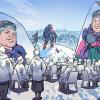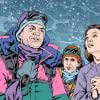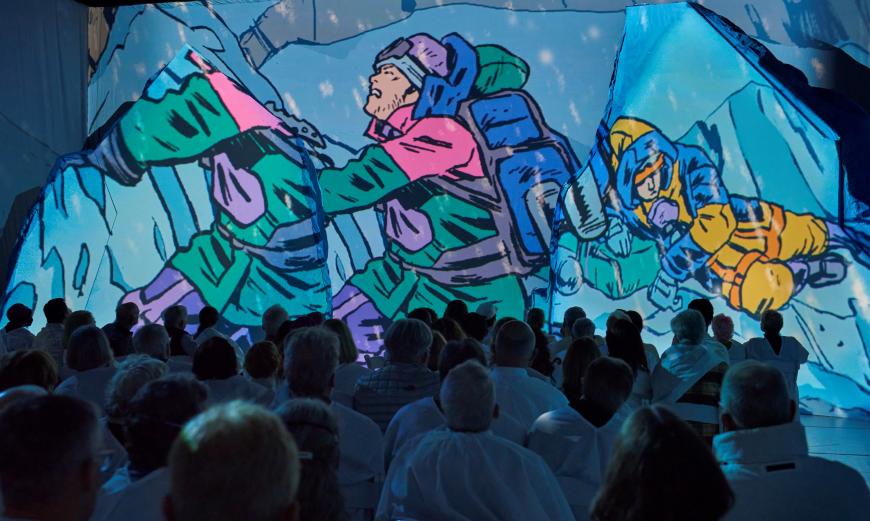
Eight climbers died during a blizzard on Mount Everest in May 1996. This disaster gave rise to artworks in several media: Jon Krakauer’s best-selling book Into Thin Air (and a film based on the book), Anatoli Boukreev’s The Climb, the 2015 film Everest, and more. The Dallas Opera commissioned composer Joby Talbot and librettist Gene Scheer’s opera Everest and gave its premiere in 2015. Nicole Paiement, Dallas’s principal guest conductor, led the premiere.
In the Bay Area, Paiement is the general and artistic director and conductor of Opera Parallèle. During the coronavirus pandemic, that company created an animated film version of the opera, which was available online for some months in 2021 and 2022. The animated film was the brainchild of Opera Parallèle’s creative director, Brian Staufenbiel, and was created with illustrator Mark Simmons and director of photography David Murakami. Now, the film has materialized in San Francisco, transformed at Z Space into Everest: An Immersive Experience.
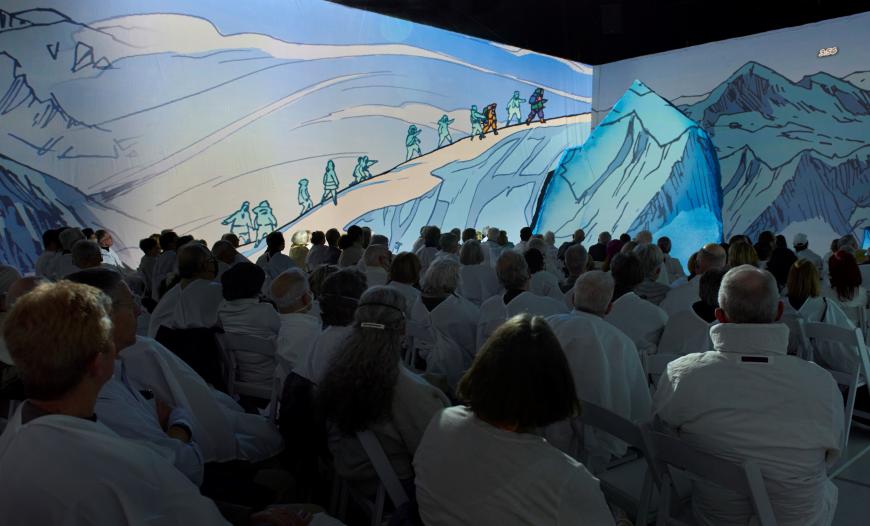
How immersive is Everest? Very immersive! Opera Parallèle is asking audience members to wear white or light-colored clothing, and if you enter dressed in black, you’ll be asked if you’d like to wear a white poncho, the better to blend into the Himalayan snows depicted in the opera. And in the theater, you’ll find that all of the chairs are white and you’re surrounded on all sides by cartoons depicting the heights of Mount Everest.
The action of the opera takes place around you, moving from one wall to another. (The supertitles are on only one wall, though.) The drawings, whether animated or not, are in an uncomplicated comic-book style. They’re not trying to imitate life or reflect the real world. Faces are rendered with more detail, and facial movements, based on the singers’ own faces, track with the sung text.
Adding to the immersion, there are no live singers or orchestra; all are prerecorded. In fact, the orchestra isn’t an orchestra; it’s a digital version of the original score, created in London by soundtrack engineer Magnus Green, working closely with Talbot and Paiement. The singers were separately recorded at Skyline Studios in Oakland, with Paiement conducting the soloists and choral quartet along with the recorded score.
The digital soundtrack is extremely effective and works perfectly well; sound engineer Miles Lassi, who created the final mix, beautifully balanced the recorded voices with the digital score. The text is largely comprehensible even if you’re not reading the supertitles.
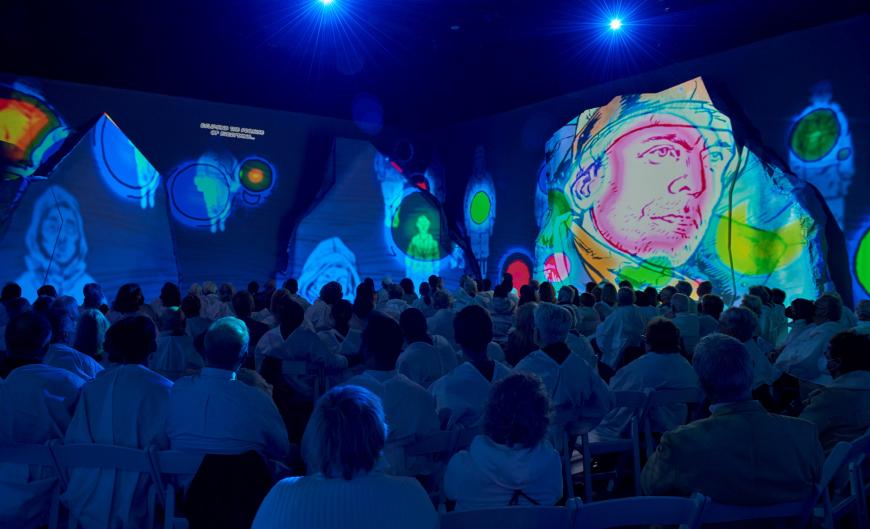
Everest focuses on two story lines from the climbing disaster: the fate of guide Rob Hall and one of his clients, Doug Hansen, who both died, and that of another of his clients, pathologist Beck Weathers, who lived but was, literally, left for dead on the mountain. The libretto counts off the time of day as events unfold because timing is crucial for surviving the extreme cold and lack of oxygen high on Mount Everest. And Hall made a critical, fatal error: He pressed on toward the summit past the time when climbers could expect to reach safety by turning back. A blizzard struck in the early evening, and by the next day, eight climbers had died.
The libretto is firmly rooted in what’s known about that day on the mountain, even as it imagines some of its subjects’ internal dialogue and their terrible experiences. As the minutes and hours tick away, you feel the climbers’ desperation and will to survive. Weathers, who had a history of severe depression, sings that “this is where I want to be” and “there is a kind of bliss found only when I push like this.”
Hall encourages Hansen to survive and tries to reassure his wife, Jan Arnold, during a satellite phone call. Arnold, a physician and climber, is in New Zealand and would have been on Everest had she not been pregnant. As she sings, repeatedly, not to anyone in particular, “Nobody is OK that high that late.”
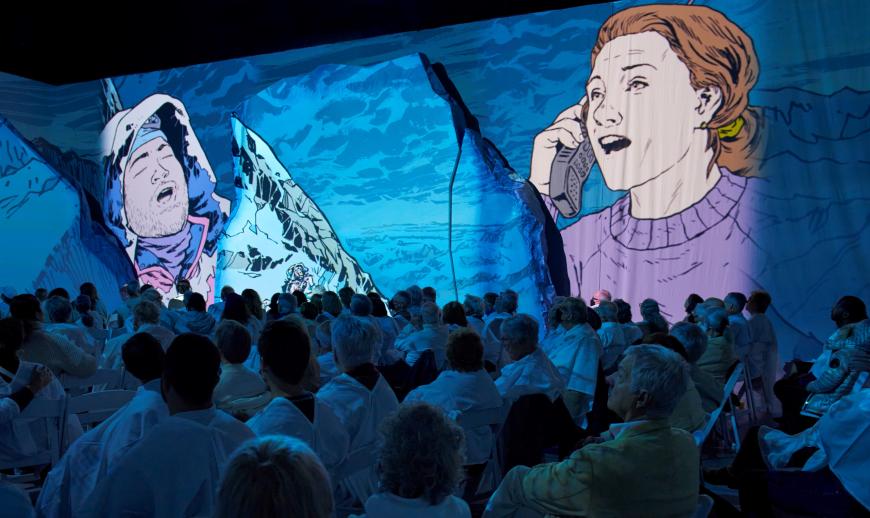
Talbot’s score is intensely atmospheric and as gripping as the story. The winds howl, strings keen, an array of percussion punctuates the action. Your internal temperature is likely to drop as you sit among the mountain scenery and hear the score. The principal singers all have aria-like passages; Hall and Arnold sing a duet expressing their love. Hall suggests a name for the daughter they’re expecting.
Even though they’re not physically present, the singers all put across their characters’ personalities, hopes, and fears. Sasha Cooke brings her gorgeous mezzo to Jan Arnold, and Kevin Burdette is a firm and passionate Beck Weathers; they created these roles in the original Dallas production. Nathan Granner makes a dark-toned Rob Hall, and Hadleigh Adams is Doug Hansen. Matt Boehler sang two brief roles and was a member of the vocal ensemble, along with Shawnette Sulker, Whitney Steele, and Kevin Gino.
Everest plays at Z Space, 450 Florida St., San Francisco, through Sunday, Feb. 12.


